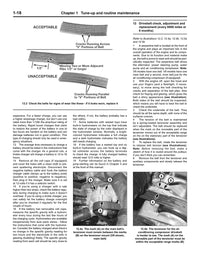Any car will go precisely nowhere if it has a flat battery. Here we show you how to do a few battery tests with a simple multimeter, so you can work out what's wrong.
How many volts should a car battery have?
A healthy car battery should register about 12.6 volts. It's important that you test the battery after it's been sitting for at least an hour, to get what's called the 'resting voltage'. If you've recently been for a drive (and as long as the charging system is working correctly) the battery is likely to give a higher reading than the resting voltage, which could be misleading.
Better still, leave the car overnight and test the battery in the morning to get a really accurate gauge of the state of charge.
How old is too old for a car battery? Find out here

Using a multimeter to test a battery is easy. The first thing to do is make sure you can access the battery terminals (the metal connections on the top or front of the battery).
Batteries are commonly located in the engine bay to one side of the engine. If the battery is not immediately obvious when you open the hood, consult the owner's manual. In modern cars, the battery will often have a plastic cover which will unclip, hinge up, or occasionally require removing with a few bolts or screws. There may also be a red cover over the positive (+) terminal that will lift off or snap open, too.
Once the battery is exposed, be extremely careful that nothing metal touches the terminals and causes a short, so don't rest wrenches or other tools on top of the battery.
Jump starting a battery: the right and wrong ways to do it
How to check a car battery with a multimeter
The first test with your multimeter will measure DC voltage, indicated with a solid line and a dashed line above a letter V. Set the dial to 20, which will allow you to accurately measure between 0-20 Volts.
Touch the red probe to the positive (usually red) terminal, and the black probe to the negative (black) terminal. The terminals will be marked + and -. If you get a reading with a minus in front of it (-12.6 rather than 12.6) you've got the probes the wrong way round!
The resting voltage should ideally be no lower than 12.6V. A battery that reads 12.2V is actually only 50% charged, and is classed as discharged below 12V.
One thing to bear in mind is that all modern cars experience 'parasitic loss', which is when something electrical drains the battery even with the engine turned off. So, systems such as the clock, computer and alarm use some power. If you suspect this is killing your battery during storage, you might be wise to disconnect the battery or remove it entirely.
If the multimeter reads less than 12.6 volts, disconnect the battery and fully charge it using a battery charger. Then let it rest overnight. If it holds a charge when it's not connected to the car – something is draining the battery far faster than the computer memory and digital clock.
Time to change the battery? Here's how to do it
How to check your alternator with a multimeter
An alternator produces electricity and charges the battery. Not only that, but while you're driving it also takes over and delivers power to the car's electrical systems.
So with the engine running (and being mindful about moving parts) conduct the same battery test as above with your multimeter. A healthy charging system should give a reading of between 13.8V and 14.4V at regular idle speed.
Anywhere outside that range and your car's either under, or over charging – both of which will shorten the battery life and require further investigation. For more on the charging system in your car, see When Good Alternators Go Bad (and Why).
How to find dead cells in a car battery
First things first, knowing a battery cell is dead is of no more use to you than knowing that the battery won't hold a 12.6 volt charge, because you can't fix it. So, a test of the resting voltage is just as effective a diagnosis.
A battery usually won't go bad all at once; instead, some of the cells that make up the battery will go dead. An engine that's slow to turn over when starting is often a sign of dead battery cells.
Most new car batteries are of the sealed 'maintenance free' variety, but some older batteries allow you to access the individual cells. The cells will either have individual caps, or a plastic cover that clips over all, or several of the cells. The cells contain a mix of water and sulfuric acid, so make sure you don't get any liquid on your skin.
To test each cell, you need a hydrometer-style battery tester that measures the specific gravity of the battery acid. Based on the number of balls floating, you can tell whether the cell is dead or not.
Pro Tip: Before you disconnect your battery make sure you know the anti-theft code for your stereo – you may find it won't work when you reconnect it otherwise!


























